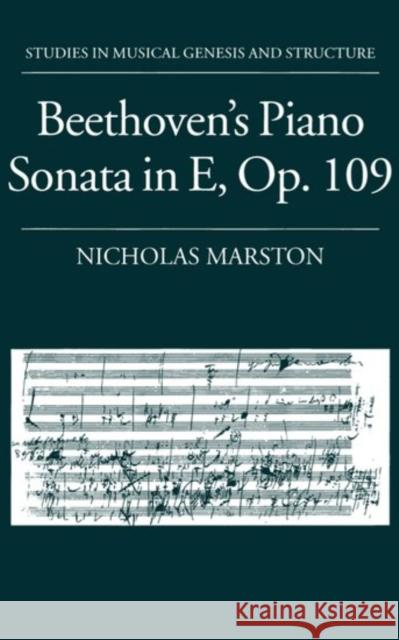Beethoven's Piano Sonata in E, Op. 109 » książka
Beethoven's Piano Sonata in E, Op. 109
ISBN-13: 9780193153325 / Angielski / Twarda / 1995 / 296 str.
In this book on Beethoven's Piano Sonata in E, Op. 109, Nicholas Marston combines source studies and a Schenkerian analytical approach to produce one of the most extensive and detailed studies of a Beethoven piano sonata ever published. The study is based on a complete transcription of all the surviving autograph musical sources: the sketches, a fragmentary Urschrift, and the autograph score. Early printed editions and manuscript copies are also discussed and the text is handsomely supported by extensive transcription from the sources. After an introductory chapter in which previous work - notably that of Heinrich Schenker himself - on this sonata is reviewed, chapter 2 draws upon Beethoven's letters, conversation books, sketchbooks, and other sources to build up a detailed 'biography' of Op. 109. The middle chapters form the core of the analytical study: the sketches for each of the three movements are analysed both to reveal aspects of the genesis of the movement and to build up a particular analytical approach to the final version. The discussion embraces all levels of detail; even Beethoven's previously misunderstood notation of final barlines in the autograph score is shown to be musically significant. In the concluding chapter the notion of 'sketch' is extended beyond Op. 109 and the results of the whole study are summarized. The book might be read as a study in the extension of conventional Schenkerian analysis. Marston argues that individual movements of Op. 109 are structurally incomplete and that satisfactory closure is achieved only at the level of the entire work. The concluding theme-and-variation movement is crucial, and Marston offers a rare Schenkerian perspective onlarge-scale coherence in this genre. But in combining these analytical perceptions with an understanding of Beethoven's sketches more as valid proto-compositions in their own right than as wrong turnings en route to a 'perfect' finished work, Marston also offers a unique an











